- Updated on November 1, 2020
![]() By Dr. Artour Rakhimov, Alternative Health Educator and Author
By Dr. Artour Rakhimov, Alternative Health Educator and Author
- Medically Reviewed by Naziliya Rakhimova, MD
| Respiratory Frequency |
Body oxygen test result |
Duration of sleep |
Quality of sleep |
| >26 breaths/min | <10 s | Often >10 hours | Often very poor |
| 15-26 breaths/min | 10-20 s | Often >9 hours | Often poor |
| 12-20 breaths/min | 20-40 s | 6-8 hours | Insomnia possible |
| 7-12 breaths/min | 40-80 s | 4 hours | Excellent |
| 5 breaths/min | 2 min | 3 hours | Excellent |
| 3 breaths/min | 3 min | 2 hours | Excellent |
Medical research on right sleep habits
 Epidemiological research has proven that early morning hours have the highest mortality rates and rates of acute exacerbations for strokes, heart attacks, seizures, asthma, bronchitis and many other common conditions. However, mainstream medicine largely continues to ignore the effect of sleep on health. Fortunately, there are smart life-oriented clinical physicians for whom sleep is one of the central lifestyle factors to take care of.
Epidemiological research has proven that early morning hours have the highest mortality rates and rates of acute exacerbations for strokes, heart attacks, seizures, asthma, bronchitis and many other common conditions. However, mainstream medicine largely continues to ignore the effect of sleep on health. Fortunately, there are smart life-oriented clinical physicians for whom sleep is one of the central lifestyle factors to take care of.
Decades of systematic medical research and clinical experience of Soviet and Russian Buteyko MDs has accumulated rich practical material about the role and place of sleep in health restoration and breathing retraining (how to achieve slower breathing with more oxygen in body cells). Good sleep is an important factor of well-being that improves quality and amount of breath work, better adherence to positive lifestyle factors, and promotes lighter breathing and better overall body-oxygen test results. When sleeping problems or insomnia are already present, using various sleep hygiene ideas and techniques helps to gradually improve quality of sleep. Poor quality of sleep, on the other hand, worsens CP growth creating a vicious circle: poor sleep → poor digestion, low energy, lack of motivation and hyperventilation → low blood CO2 and overexcited hypocapnic hypoxic brain → poor sleep → etc.
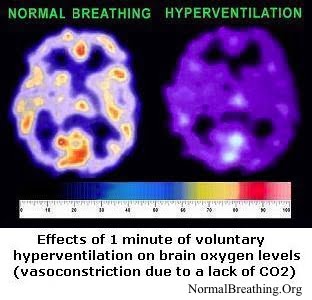
Why Sleep is Death for the Sick (Medical Facts)
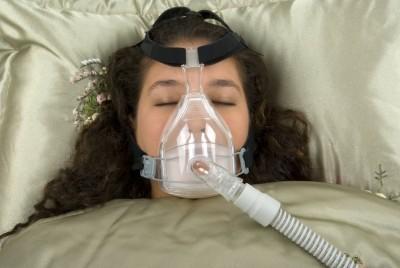 As we discussed before, the early morning hours (4-7 am) have the highest mortality rates due to Morning Heavy Breathing Effect (follow the link to read medical abstracts related to effects of sleep on the severely sick and critically ill people, as well as people in better health). The same time has the highest rates of acute exacerbations of asthma, heart disease, epilepsy, etc. We already discussed before 2 central factors for this Morning Heavy Breathing Effect: sleeping on one’s back and mouth breathing with simple solutions How to Prevent Sleeping on One’s Back and How to Tape Mouth.
As we discussed before, the early morning hours (4-7 am) have the highest mortality rates due to Morning Heavy Breathing Effect (follow the link to read medical abstracts related to effects of sleep on the severely sick and critically ill people, as well as people in better health). The same time has the highest rates of acute exacerbations of asthma, heart disease, epilepsy, etc. We already discussed before 2 central factors for this Morning Heavy Breathing Effect: sleeping on one’s back and mouth breathing with simple solutions How to Prevent Sleeping on One’s Back and How to Tape Mouth.
For over 90% of students, the morning CP is significantly less than their previous evening CP numbers. For many students, the CP drop is as high as 10 s or about 2 times. Hence, it is common for modern people to breathe about twice as heavily during the early morning hours. As Dr. K.P. Buteyko noticed during his medical research in the 1960’s, transition into horizontal position intensifies breathing (this is manifested in alveolar hyperventilation). Depending on sleep position and numerous other factors discussed here, breathing gets heavier throughout the night’s sleep, especially after about 4-5 hours of sleep on a soft surface.
Criteria of Right Sleep Habits
Breathing training and significance of the morning CP allows us to suggest a simple criteria that can be used as a guideline in relation to sleep hygiene: “You need to worry about your quality of sleep and sleep factors and work towards having better or good sleep, if your morning CP is less than your evening CP”. If your morning CP is about the same as your maximum evening numbers, whatever your sleep, it does not worsen your health.
Allergies, Headaches, Migraines, and Sleep
 Tens of medical studies have found that exposure to allergies during the day produces a negative effect on quality of sleep. It is, therefore, necessary to remove or avoid all possible sources of allergic triggers, including:
Tens of medical studies have found that exposure to allergies during the day produces a negative effect on quality of sleep. It is, therefore, necessary to remove or avoid all possible sources of allergic triggers, including:
– tap water, table salt and food allergies (dairy, gluten, citrus fruits, tomatoes, peanuts, etc.)
– air allergies: dust, dust mites, dust mites droppings, “fried” dust mites which appear after turning the heat on in the house (these heat-treated airborne proteins have a strong allergy effect on many people)
– chemicals and materials that are in touch with skin, including detergents used to wash clothes, may cause allergic reactions or affect the intrinsic EMF field that exists in and around the human body due to natural neuronal processes (see more info about this factor below).
It was also found that some people wake up at about 3 or 4 am and cannot sleep for the next 2 hours because they took tablets with cellulose fillers in the morning. (Many mineral supplements use microcrystalline cellulose as a filler). If this is the case for you (waking up and insomnia at about 3 am), avoid such supplements and find possible sources of allergies that can cause this effect.
Sometimes people with serious digestive problems (chronic diarrhea) and/or increased intestinal permeability can develop allergic reactions to normal food chemicals, including starches, fats, and proteins they eat. It is known that less than 5% of modern people chew food well. When meals are not chewed well enough, large food particles, after they penetrate undigested into the bloodstream, can trigger migraine headaches and/or other allergic reactions also causing severe chronic problems with sleep for the following night. The solution is to chew all food exceptionally well for 2-3 days (no swallowing at all or just chewing up to 80-120 times each mouthful until it dissolves completely) and observe the effects. (Other breathing students will surely benefit from good chewing as well.)
Time Spent Outdoors
According to Dr. Buteyko, only children can tolerate well long periods of time spent indoors, while with aging, people require more and more time to be spent outdoors. Hence, depending on your age, make sure that you spend a certain number of hours outdoors every day for your good sleep hygiene.
Physical Exercise with Strictly Nose Breathing (In and Out)
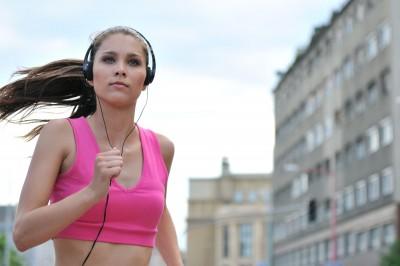 Many people, based on their experience, are aware that physical exercise improves the quality of sleep due to several factors. Physical exercise with nose breathing does not improve the CP immediately but does increase the next morning’s CP. Learn more about: Effects of Exercise on the Respiratory System.
Many people, based on their experience, are aware that physical exercise improves the quality of sleep due to several factors. Physical exercise with nose breathing does not improve the CP immediately but does increase the next morning’s CP. Learn more about: Effects of Exercise on the Respiratory System.
What to Do Before Sleep
Many modern people like watching TV, playing PC games or doing work on a computer before sleep. This practice as well as overheating, overeating, and slouching in an armchair, or on a couch or sofa all intensify breathing and lower body oxygen content. For example, having a late meal (e.g., when one goes to sleep with food in the stomach or soon after stomach emptying) is a very destructive factor for night sleep and next morning CP.
As an alternative, you can go for a 15-20 min walk or even light jogging (no intensive workout or exciting games before sleep). As discussed on other web pages, 9-10 pm, in general, is the most effective time for doing breathing exercises due to a long period without meals and their positive effect on the next morning’s CP. Taking a cold shower and having correct posture are other steps of good sleep hygiene. The best strategy in relation to meals is to have at least 2 hours with no food in the stomach just before your sleep. If you get too hungry at 8 or 9 pm, have a small snack.
When to Go to Sleep
One of the main Buteyko rules of good sleep hygiene to go to sleep when one is really sleepy (i.e., yawning, feeling relaxed and ready to sleep physically and mentally). On the contrary, going to sleep at a routine time (e.g., at 11 or 12 pm) and ignoring body signs is a mistake that will make breathing deep and body-oxygen content low.
Type of Materials that Are in Touch With Skin During Sleep
When the CP is less than 20 s, most people do not notice the negative effects of synthetic materials on skin flora, electrical communication among body nerve cells, and breathing. However, with higher CP numbers many breathing students are able to notice that synthetic clothing intensifies their breathing and lowers their CPs. Hence, it is smart to use only natural materials that are in contact with skin, especially during sleep.
In addition, some people develop allergies to commercial detergents that are used to wash clothes. Most modern detergents contain toxic chemicals. A better option is to use hypoallergenic, dermatologically tested or baby-type detergents for doing laundry.
Air quality and sleeping with windows open
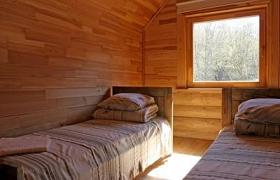 Even healthy people and people without any allergies are affected by poor air quality, which is very common in modern human dwellings. Consider the physiological mechanism. An average person breathes about 10 L/min. This corresponds to about 20-25 s CP. During sleep, minute ventilation is increasing throughout the night, while the CP drops. Hence, we can assume that the person breathes about 10 L/min during sleep; 600 L during 1 hour of sleep, and several cubic meters of air during one night of sleep.
Even healthy people and people without any allergies are affected by poor air quality, which is very common in modern human dwellings. Consider the physiological mechanism. An average person breathes about 10 L/min. This corresponds to about 20-25 s CP. During sleep, minute ventilation is increasing throughout the night, while the CP drops. Hence, we can assume that the person breathes about 10 L/min during sleep; 600 L during 1 hour of sleep, and several cubic meters of air during one night of sleep.
Each cubic centimeter of air has millions of airborne particles, most of which are foreign to the human body. They usually include dust, dust mites, dust mite droppings (toxic proteins for humans), fire retardants (very poisonous chemicals present, for example, in carpets), glues, paints, viruses, bacteria, yeast, mold, and many others. If there is a carpet, dusty curtains, many newspapers, shelves with books, or clothes hanging here and there, billions of air born particles may be present in each cubic centimeter. In order to find the total load of chemicals, multiply these billions by 1,000,000 to get the number of airborne particles in 1 cubic meter and then by the number of cubic meters that you inhale during sleep. The total number of particles that gets into the human body is staggering.
Normally, up to 99% or even more of these airborne particles are trapped in a layer of mucus in human sinuses, when they are moist. Then this mucus together with the intruders is drained into the stomach for deactivation. However, one can easily check that the nasal passages after sleep become dry. (This happens due to overbreathing and lower CP in the morning.) Hence, more particles are able to penetrate deeper into the airways and alveoli of the lungs. Once the airborne particles are in the lungs, they can penetrate into the bloodstream, if small enough, causing stress to the organs of elimination and producing various chemical damage. Or they could be removed by cilia cells that beat in unison against gravity moving a layer of mucus out of the lungs. (This may not be possible if airways are inflamed or the CP is low.)
This is the reason why Buteyko reduced (or shallow) breathing exercises often cannot improve one’s breathing (the CP after the session will not increase) if they are done in rooms with carpets, dust and/or other sources of air pollution.
Hence, it is important to create conditions where the air is as pure as possible and remove or isolate all sources of air pollution. Carpets make air quality from about 10 up to several hundred times worse and using a layer of plastic on the floor is the cheapest and easiest solution for this problem, while there are many other long-term options as well.
Having windows open during sleep allows positive and negative ions to move into the bedroom and this greatly improves air quality due to their purification effect. How does it work? Ions combine with airborne particles making them charged. This leads to the formation of large complexes that consist of these charged positive and negative airborne particles. However, due to greatly increased weight, these conglomerates cannot remain airborne anymore and they drop on the floor. This is the reason why outdoor air is generally much cleaner since cosmic radiation generates large amounts of ions that purify the air.
If you open your windows or install an ionizer in the bedroom, you can greatly improve air quality for better sleep. Keep in mind that metal nets or screens that are used to protect houses from flies and mosquitoes will block penetration of ions since these nets have some static electrical charge. Therefore, one type of ions will be attracted to this metal net and another will be repelled by it. You need to have a good size hole for movement of ions into the bedroom instead of nets on the windows.
Thermoregulation
Over 80% of modern people have too warm conditions for their sleep with devastating health effects.
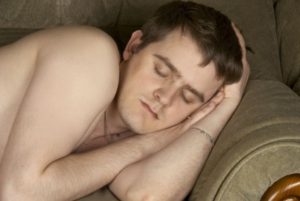 Once the CP is above 20 s, it is important for dynamic breathing training and further CP growth, to use cold showers as it is described in one of the Modules. Adaptation to colder conditions increases the formation of brown fat cells and this favors improved tolerance to the colder environment all the time, especially during sleep.
Once the CP is above 20 s, it is important for dynamic breathing training and further CP growth, to use cold showers as it is described in one of the Modules. Adaptation to colder conditions increases the formation of brown fat cells and this favors improved tolerance to the colder environment all the time, especially during sleep.
When the CP is below 20 s, it is normal to avoid colder conditions and body overcooling since the immune system is unable to resist infections in sinuses and other organs. Stimulation with cold has beneficial effects on well-being and improved sleep due to slower and easier breathing and increased body O2.
Hence, if your CP is above 20 s, make sure that you feel slightly on the cold side during sleep. Ideally, for the highest morning CP, one should sleep in such thermoregulatory conditions that if they are a little colder, the person will not be able to sleep.
For most modern people, overheating during sleep is one of the central factors that reduce their morning CP. Use short blankets (this is how our predecessors lived for millennia: just a skin of an animal to cover one’s body so that if it became warmer, arms and legs would be stretched out and they would ensure normal heat exchange) or several bed sheets (or plain linen) instead of heavy and warm blankets, duvets, or sleeping bags.
Hard beds and sleeping on the floor benefits
Use of hard beds for sleep is another fundamental factor of the Buteyko method that has been routinely taught by Russian MDs trained by Dr. Buteyko. Modern beds and mattresses, including various special and exotic ones, make humans sleep for a much longer time in the same position. As a result, breathing gets heavier during sleep, especially when sleep is longer than 4 hours. Hard beds, on the contrary, are felt as uncomfortable and the student remembers short wake ups to change body position during the night’s sleep. However, his well-being and morning CP is going to be higher after sleeping on a hard bed.
Furthermore, hard beds also prevent oversleeping and going to sleep too early. Indeed, when the bed is soft, many people have a tendency to lie down earlier (to “relax”) and to continue to be in a horizontal position after waking up in the morning. Both these phenomena are against the rules suggested by Dr. Buteyko in relation to sleep timing. However, when the bed is hard, a student will go to sleep only when really sleepy and will not be willing to “relax” in the morning after waking up.
How hard should the bed be in order to produce these positive effects? Imagine 2 layers of a thin blanket laying on a solid table or wooden floor. This is the level of hardness for good sleep hygiene. (If you decide to sleep in a sitting position, the surface can be very soft and this will not worsen your breathing and MCP.)
Sleep Positions
 While best sleep positions and related medical research have been discussed before (see Best Sleep Positions), alternation between the prone and left sleeping positions is a good option for many students. However, Dr. Buteyko noticed that transition to horizontal position reduces body O2 and CO2 content and worsens one’s health. Hence, if you are able to sleep in an armchair, your morning CP will be higher since sitting is the best sleeping position for highest body oxygenation and maximum daily well-being.
While best sleep positions and related medical research have been discussed before (see Best Sleep Positions), alternation between the prone and left sleeping positions is a good option for many students. However, Dr. Buteyko noticed that transition to horizontal position reduces body O2 and CO2 content and worsens one’s health. Hence, if you are able to sleep in an armchair, your morning CP will be higher since sitting is the best sleeping position for highest body oxygenation and maximum daily well-being.
For those people who have problems with sleep or insomnia, and who have a lower morning CP and circulation problems (e.g., varicose veins), inclined beds should be used. A simple solution to make an inclined bed is to put thick books or folded blankets under the side of the mattress where your head is located. For more permanent solutions, visit Inclined Bed Therapy.
In my view, most, if not all students will benefit from sleeping on inclined beds, if they sleep in a horizontal position.
Sleeping while sitting
While teaching breathing retraining to hundreds of my students, I discovered that it is not easy for them to sleep sitting all the time. Only some of my students found that their body actually liked this sleep position. However, most of my students found that it is not easy, even though these students tried this sleeping posture for up to 2-5 nights in a row.
In this video below, Dr. Artour Rakhimov explains the benefits of sleeping sitting.
Therefore, it seems that sleeping sitting can be used by nearly all students as a temporary solution to deal with overbreathing during sleep. However, even if you try to sleep while being seated, it is important to know and apply several ideas that make sleeping sitting easier without compromising the definite benefits of this sleeping posture. You can find these suggestions right below here as your bonus content.
– Make a solid support for both elbows as in the case of sitting on old solid sturdy chairs
– Use a circular pillow for the neck support (as those that are used in airplanes)
– Make a head support from behind (and ideally from the left and right sides too)
– Maintain nearly a vertical trunk position (at about 80-90 degrees from the horizontal line), although some people manage to get great sleep with only 45-60 degrees or while reclining. You can test the suitability of any angle for 2-3 nights, and measure its effects on the CP and symptoms in the morning and during the day.
[/sociallocker]
What to Do to Fall Asleep
Absolute focus on relaxation and reduced diaphragmatic breathing, while in bed is another assisting factor for good sleep hygiene. One may use breath holds provided that they help you to fall asleep faster. (This may not be the case with all students and in all situations, as the Breath Holds and Maximum Pauses web page describes.) Here is the breathing exercise How to Fall Asleep Faster.
What to Do if No Sleep for More Than 10 Min
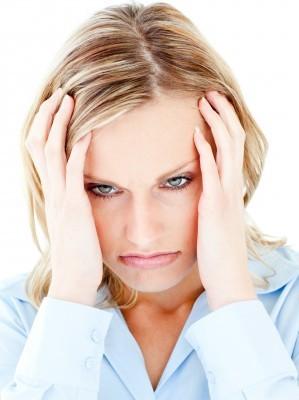 If one cannot fall asleep within 10 minutes and while practicing reduced breathing (this may happen due to numerous reasons), he or she should get out of the bed and think about what is missing: for example, a 15 min walk in fresh air, breathing session before sleep, or a cold shower.
If one cannot fall asleep within 10 minutes and while practicing reduced breathing (this may happen due to numerous reasons), he or she should get out of the bed and think about what is missing: for example, a 15 min walk in fresh air, breathing session before sleep, or a cold shower.
Recent allergic reactions can cause insomnia for the next 2 hours due to abrupt disruption in the natural regulation of chemicals and hormones (histamine, cortisol, melatonin, insulin, thyroxin, etc.). If this is the case, it is better to get busy with some things and go to sleep later. In certain situations, allergic reactions can cause people to wake up at about 3 or 4 am and no sleep is possible during the next 2 hours. Lying in a horizontal position is the worst choice in this case. Inclined beds reduce the negative effects of insomnia, but the best option is again to get out of bed and occupy yourself with some activities.
Having a small snack, if hungry, helps many people to fall asleep faster. However, make sure that it is not too large and ideally your stomach should be empty when you try to fall asleep. Meanwhile, some people, especially with low body weight and a need to gain weight, cannot fall sleep quickly unless they have a small snack just before sleep. The same is true for those who have problems with hypoglycemia or low blood glucose levels.
What to Do in the Morning
Measuring the CP is an excellent way to start the day. It helps you to get out of the bed fast, focus on reality (instead of having fantasies), boost your body’s CO2 level, and, for experienced students, trigger reduced breathing due to the previous conditioning.
What to Do During the Day in Case of Mild Sleep Deprivation
If you did not get enough sleep during the previous night, your daytime performance can be worse especially due to the accumulative effect of several nights with poor sleep. It is useful, on the other hand, to reduce sleep by having a higher morning CP. Dr. Buteyko indeed applied this technique to his patients.
“Many severely sick patients remain sitting up, afraid to lie down. This is sensible. We should lie down only for a minimum amount of time, and only when sleeping. Our patients with deep breathing practice [breathing exercises], but cannot control their breathing at night, and hence, sleep is actually a poison for them.
The longer he sleeps, the more chances that his breathing will be increased causing attacks. Therefore, we wake him up after 1-2 hours, he practices decreasing respiration, we reduce his sleep down to 4-5 hours in a 24-hour period, not more, and he cures himself. Later, when the breathing is corrected, sleep becomes less than the norm. It reduces itself. It gets deeper and deeper. This alarms many patients, “Previously, I was sleeping for 8 hours and it was not enough, but now I sleep for 4 hours and get enough”. Yes, it is possible to get enough sleep in 4 hours with very light breathing.” Dr. Buteyko Lecture
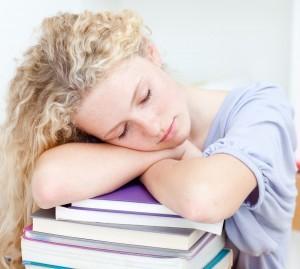 If you decide to restrict your sleep down to about 6 hours, get a short nap (e.g., 5-20 min) sitting (e.g., in an armchair) in the afternoon, but avoid transition into the horizontal position for it somehow worsens the quality of life for the remaining part of the day.
If you decide to restrict your sleep down to about 6 hours, get a short nap (e.g., 5-20 min) sitting (e.g., in an armchair) in the afternoon, but avoid transition into the horizontal position for it somehow worsens the quality of life for the remaining part of the day.
What to Do During the Day in Case of Severe Sleep Deprivation
Try to sleep while sitting, if possible, for as long as the body needs, using all the rules suggested here for good sleep hygiene. Do not forget to get a high CP before this daytime sleep since it will help you to improve its quality. Overeating, mouth breathing, or overbreathing, all will make your sleep quality worse.
Table. Summary of Right Sleep Habits: How to Sleep Better
| Parameters | Sleep quality: | |
| Good | Poor | |
| Allergic reactions during the day | Avoided | Present |
| Time spent outdoors | Up to 2-5 hours daily | Less than 1 hour |
| Physical exercise with strictly nose breathing (in and out) | Up to 1-3 hours daily | Less than 1 hour |
| What to do before sleep | Walk for 15-20 min outdoors or even light jogging; 15-20 min breathing exercises; have a meal earlier; cold shower; correct posture | Watching TV, playing games or working on a computer, overheating or having a late meal, overeating, slouching in an armchair, on a couch or sofa |
| When to go to sleep | When really sleepy | By time |
| Type of materials that are in touch with skin during sleep | Natural (cotton, hemp, wool, …) | Synthetic (polyester, acrylic, nylon, …) |
| Air quality in the bedroom | Excellent | Poor |
| Thermoregulation | Current CP<20 s: feeling normal or little warm during sleep Current CP>20 s: feeling little on the cold side during sleep |
Too warm blankets, too warm room |
| Surface of the bed | Hard (the same as when 2 thin blanket layers are lying on a hard surface) | Soft |
| Sleep positions | Sitting, prone, left side | On one’s back, right side |
| What to do to fall asleep | Buteyko reduced breathing exercise | Worry about life problems tomorrow and poor health now |
| What to do if no sleep for more than 10 min | Get out of the bed, go for a walk outdoors or do a breathing session | Continue to suffer |
| What to do in the morning | Get out of the bed | Continue to lie horizontally |
| What to do during the day in case of mild sleep deprivation | Get a short nap (e.g., 5-20 min) sitting (e.g., in an armchair) | No nap or napping in a horizontal position |
| What to do during the day in case of severe sleep deprivation | Try to sleep sitting, if possible for as long as the body needs with all correct rules | Get upset by sleepless night and try to sleep without sleep hygiene care |
Special Concerns Related to Right Sleep Habits
If you get a blocked or congested nose, unblock it before sleep with breath work: How to Unblock the Nose.
 For coughing attacks during the night, apply the How to Stop Cough at Night Technique.
For coughing attacks during the night, apply the How to Stop Cough at Night Technique.
For those who are underweight or have hypoglycemia (low blood sugar), it is often useful to have a small snack just before sleep, as described above. Otherwise, they can spend more than 1 hour trying to fall asleep.
Problems with cold hands or feet, skin itching, muscular and other types of spasms and cramps, and many other symptoms should be addressed with the Buteyko Emergency Exercise (see previous modules for details).
Some of the hardest cases in breathing retraining include those people who have low body weight, chronically miserable quality of sleep and digestive problems due to multiple allergies. These symptoms indicate dysregulation in circadian variations related to major body hormones and chemicals, such as cortisol, insulin, glycogen, histamine, melatonin, and many others. Poor sleep drastically reduces their appetite (hunger for food) and production of digestive enzymes leading to low blood sugar and weight loss. Video: Factors for Good Sleep Hygiene: How to Sleep.
– This page in Spanish: Higiene de buena dormida: Cómo dormir.

